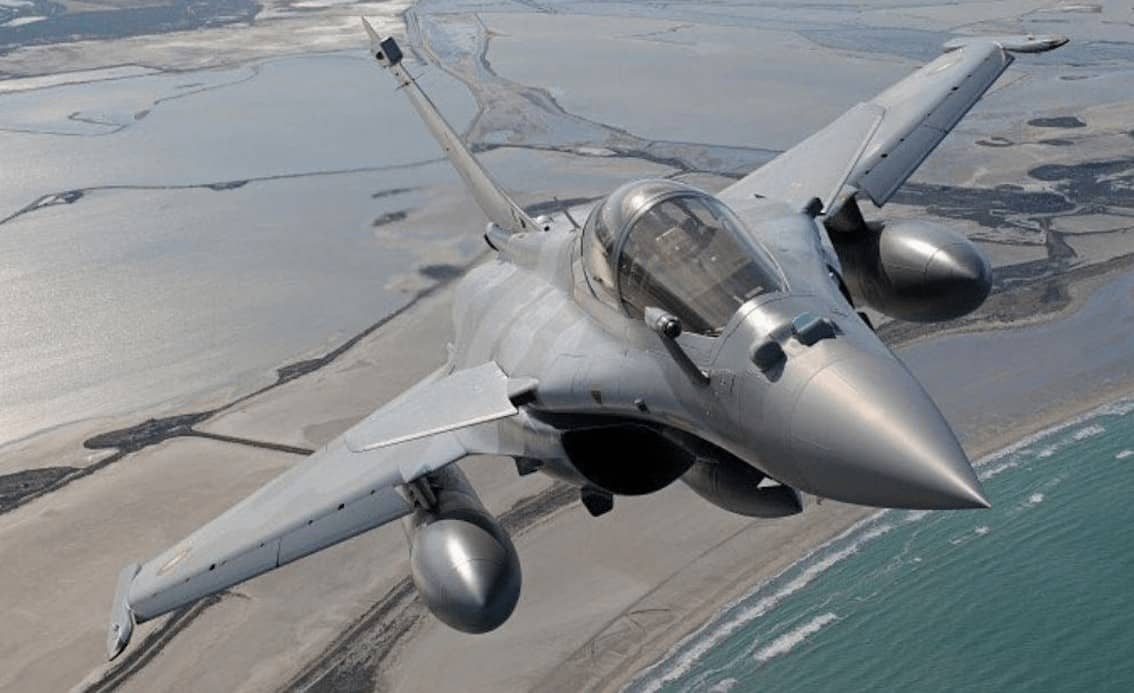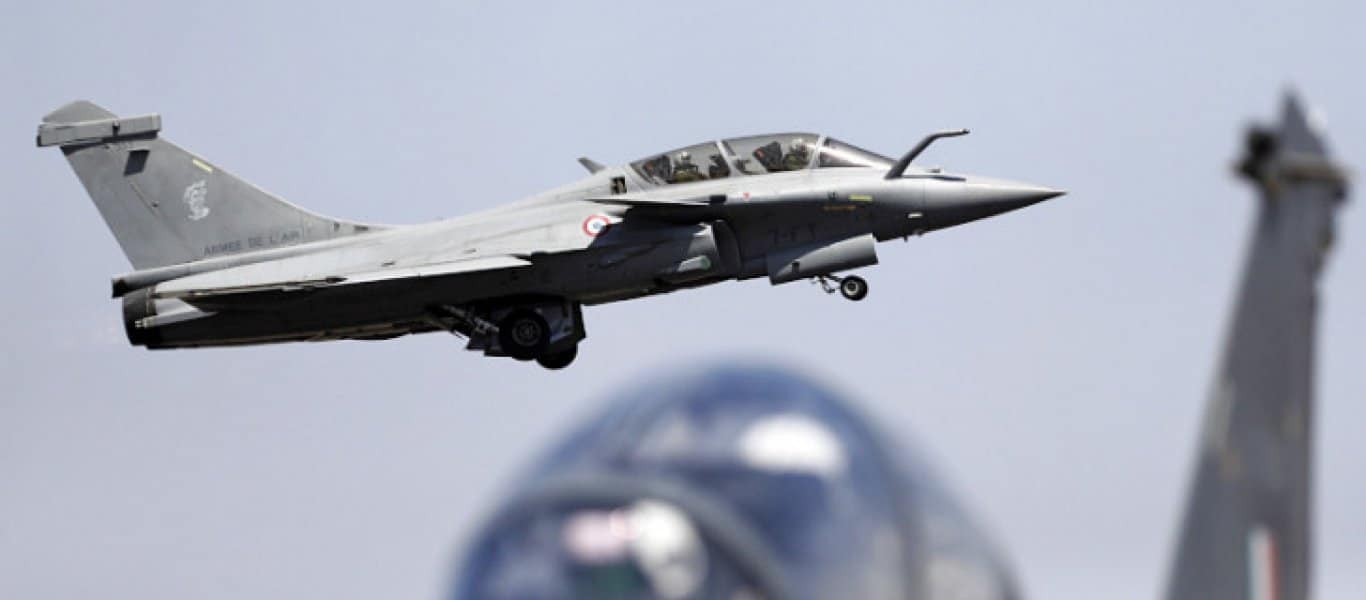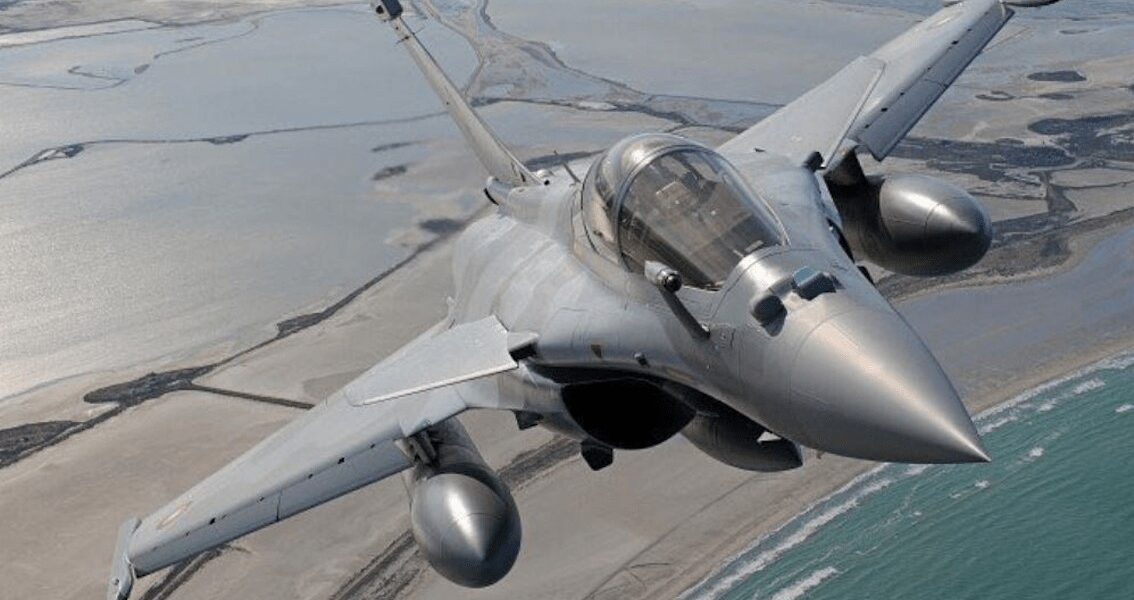Undoubtedly, the French-made Rafale fighter jet is an advantage to the Greek Air Force as it is a 4th generation aircraft, a generation more advanced than the F-16, which first flew as a prototype in 1973.
It is, of course, more advanced than Dassault's Mirage-2000.
The points which most publications focus on are the advanced electronic equipment, the armaments it can carry, the range and other technical features.
There is, however, no understanding at this time that the regular advantages of the aircraft translate into operational trump cards.
The regular environment
This aircraft is not completely stealth because the cost to make it was considered unacceptably excessive.
The Rafale, however, was designed for reduced radar cross-section (RCS) and infrared.
Many of its features have been designed to reduce its radar detectability and remain secret for the time being.
The glass cockpit was designed according to the principle of data fusion.
A host selects and prioritizes the information that will be displayed to pilots for simpler handling and control.
Among the features of the highly digitized cockpit is a built-in direct voice input system (DVI/direct voice input), which allows you to control a range of aircraft operations with spoken voice commands, simplifying operator access.
It is obvious that the use of two Snecma M88 engines allow the aircraft to perform supersonic flight, without afterburning, even with a load of four missiles and an external tank.
In addition, both engines provide much greater survival in the event of damage or impact.
The aircraft has a range of 1,850 km on a penetration mission with three tanks (5,700 L), two SCALP-EG missiles and two MICA air-to-air missiles.
Powerful armament
The 14 armor mounts enable the Rafale to carry a large weight, ie tanks and a variety of impact weapons, including the SCALP missile, as well as a variety of weapons against ground targets.
The various bombs (smart or not) include the AASM-Hammer air-to-surface missiles, the AS-30L high-precision missiles and the Magic II, MICA and Meteor air-to-air missiles.
Many refer to the Meteor range, which exceeds 100km (Indian analysts report 150+), in contrast to the American AIM-7E (43 km), AIM-7F (85 km) and AIM-120C-5 (approximately 100 km) carried by F-16s.
The differences seem small, but they are crucial, because the Meteor is powered by a built-in scramjet engine that allows it to maintain and increase speed in flight.
Conversely, conventional rockets begin to lose speed the longer they are in flight.
But what plays a crucial role is the RBE2 AA Active Scanned Radar (AESA) radar, which provides a maximum detection range of 200km.
It can detect 40 targets simultaneously over a range of 100km. It has an advanced warning receiver detection of enemy surveillance systems and a sliding bait system to prevent missiles.
The Rafale also has an integrated defense aid system called SPECTRA, which protects the aircraft from air and ground threats.
Business environment
Obviously 18 aircraft, no matter how advanced, do not provide superior armament, but can with intelligent use be a real power multiplier.
Being a multi-role aircraft, the Rafale can perform all the missions that a modern air force requires from a fighter: interception, aerial combat, bombing, escort, attack with precision against land and sea targets.
With suitable fuselages, the Rafale can also carry out reconnaissance and air supply, but also electronic warfare and interference with enemy electronic systems.
At present, however, it is not known whether such systems are included in the aircraft ordered and if they are included it is not appropriate to make this known.
The use of Rafale in the role of interception is obviously not the most appropriate, although it can easily perform it due to the possibility of a very high rate of ascent.
However, in the event that a massive invasion of Turkish fighters manages to penetrate to hit strategic targets in mainland Greece, Rafale with a full load of Meteor missiles and the ability to engage 40 targets at the same time can be fatal for the invaders.
As it turns out, the weapon carrying capabilities give the aircraft great impact capabilities. Rafale is particularly effective in long-range precision strikes.
However, because no aircraft is invulnerable to anti-aircraft systems, their small number makes their use problematic as any loss will be a major blow.
In an escort role
In contrast, Rafale offers enormous potential in the role of escorting other aircraft, which will deliver deep penetration and impact strikes against strategic targets of the adversary.
As impact aircraft penetrate to bomb with long-range weapons, Rafale can provide cover against a possible attempt to intercept the impact force.

Since Scalp missiles for precision shocks and Exocet missiles for naval targets can be carried by the existing Mirage 2000/2000-5, there is no need to use the few Rafale for this role.
The same can be said for the AGM-154C JSOW and AGM-88B HARM (anti-radar) missiles carried by the F-16.
Assuming that the supply of at least one F-35 squadron succeeds, then a combination of F-35s in the Rafale-covered bombing role could be fatal for the adversary.
The stealth characteristics of the F-35 will allow them to penetrate deeply without being noticed. Once they hit their targets they will be able to leave under the cover of the Rafale.
Obviously, even if the enemy has not "seen" the aircraft before the blow, after the attack the enemy will certainly send fighters to intercept, which will "spread" for visual contact and interception.
Airports and buildings do not change position, but aircraft change position and airports. If you do not know the position and layout of the opponent you cannot hurt them.
If Greece does not have a surveillance satellite it should gain access to such data from other countries.
Since it is unlikely that the US will provide Greece with such information, it should be sought from other friendly countries that have such capabilities.
Leasing of services provided by commercial companies may be sufficient if they meet the needs of the Air Force (real-time transmission, analysis, etc.).
Strategic importance of Rafale
The need to cover two combat theaters (Aegean and Eastern Mediterranean) gives a strategic dimension to Air Force operations.
Unlike Turkey, which is centrally located in relation to these two theaters of operations, Greece can only act centrally in the Aegean.
In the Eastern Mediterranean it must act regionally by launching the air force from its territory to this sea area.

Aircraft must have sufficient range to carry out their missions over the sea and to return safely. Rafale have the range that allows them to operate in this environment.
They are able to cover 3200-3700 km with all external tanks (up to 5) and full load.
The distance between Athens and Larnaca is 950 km, while from Crete it is about 800 km. This means that missions to Megalonisos can be undertaken with sufficient time over the operations area and avoid a dreaded supply in Cyprus.


